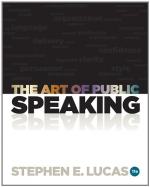The change of pitch within a word is even more important, because more delicate, than the change of pitch from phrase to phrase. Indeed, one cannot be practised without the other. The bare words are only so many bricks—inflection will make of them a pavement, a garage, or a cathedral. It is the power of inflection to change the meaning of words that gave birth to the old saying: “It is not so much what you say, as how you say it.”
Mrs. Jameson, the Shakespearean commentator, has given us a penetrating example of the effect of inflection; “In her impersonation of the part of Lady Macbeth, Mrs. Siddons adopted successively three different intonations in giving the words ‘We fail.’ At first a quick contemptuous interrogation—’We fail?’ Afterwards, with the note of admiration—’We fail,’ an accent of indignant astonishment laying the principal emphasis on the word ‘we’—’we fail.’ Lastly, she fixed on what I am convinced is the true reading—We fail—with the simple period, modulating the voice to a deep, low, resolute tone which settles the issue at once as though she had said: ‘If we fail, why then we fail, and all is over.’”
This most expressive element of our speech is the last to be mastered in attaining to naturalness in speaking a foreign language, and its correct use is the main element in a natural, flexible utterance of our native tongue. Without varied inflections speech becomes wooden and monotonous.
There are but two kinds of inflection, the rising and the falling, yet these two may be so shaded or so combined that they are capable of producing as many varieties of modulation as maybe illustrated by either one or two lines, straight or curved, thus:
[Illustration of each line]
Sharp rising
Long rising
Level
Long falling
Sharp falling
Sharp rising and falling
Sharp falling and rising
Hesitating
These may be varied indefinitely, and serve merely to illustrate what wide varieties of combination may be effected by these two simple inflections of the voice.
It is impossible to tabulate the various inflections which serve to express various shades of thought and feeling. A few suggestions are offered here, together with abundant exercises for practise, but the only real way to master inflection is to observe, experiment, and practise.
For example, take the common sentence, “Oh, he’s all right.” Note how a rising inflection may be made to express faint praise, or polite doubt, or uncertainty of opinion. Then note how the same words, spoken with a generally falling inflection may denote certainty, or good-natured approval, or enthusiastic praise, and so on.
In general, then, we find that a bending upward of the voice will suggest doubt and uncertainty, while a decided falling inflection will suggest that you are certain of your ground.




